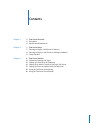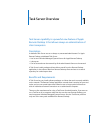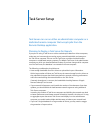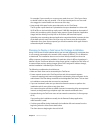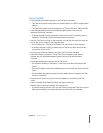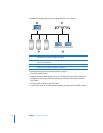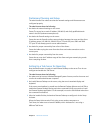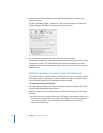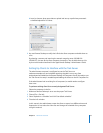
8 Chapter 2
Task Server Setup
For example, if you normally run a report every week, then set 1/7th of your clients
to rebuild caches on day one, another 1/7th on the next day and so on. You could
also stagger the cache rebuild over the course of the day.
Â
Have enough disk space for the report data cache on the Task Server.
The file system report data that is uploaded to the report database for a client with
10 GB of files on the hard disk can easily reach 5 MB. With hundreds or thousands of
clients, this can add up quickly. Data for other reports (System Overview, Application
Usage, and User History) are only 8 KB to 12 KB each, and have little impact.
Uploading user accounting data and application usage data further increases the size
of the data cache for each client. Since you may not want to store all the possible
information for a given client computer, you should customize which type of data is
collected and plan accordingly.
Planning to Deploy a Task Server for Package Installation
Using a Task Server to install software allows you to install software on a computer that
is not currently connected to the network (with a status of “Offline”). This is referred to
as AutoInstall. The installation does not occur when initially ordered, but when the
offline computer next becomes available. If a particular client is offline, the package is
held for it by the Task Server. When the client comes online, it notifies the Task Server of
its network state and any setting changes (like a DHCP-assigned IP address change),
and the installation is handled by the Task Server.
The following considerations should be met:
Â
Make sure each client can be accessed by the Task Server.
Â
Ensure network access to the Task Server from each client network segment.
A network’s topology and router configuration can keep the client computers in the
administrator’s list from being accessible to the designated Task Server. This can lead
to installation commands that can never be completed.
Â
If you use AutoInstall, make sure you have the network resources to perform the
installation task for every client at any given time.
Your network may be sensitive to sudden increases in network activity at unexpected
intervals, as designated copy recipients rejoin the network at different times.
Â
AutoInstall using the Task Server uses unicast network connections (in client groups
of 10).
If you perform the installation manually via the Remote Desktop application,
multicast traffic is used.
Â
If a client goes offline during AutoInstall, the installation fails and restarts from the
beginning when the client comes back online.
The client does
not
begin again where it left off.





